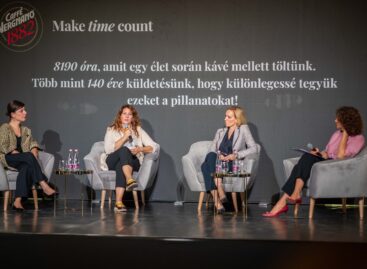Arabica coffee price hits 47-year high
The futures price of arabica coffee has reached a 47-year high, climbing to $3.08 per pound, as reported by Portfolio. The last time prices were this high was in 1977. In 2023, arabica futures have surged by more than 60%, putting significant pressure on the coffee industry and consumers alike. The price spike is primarily driven by adverse weather conditions affecting the world’s largest coffee-producing countries, such as Brazil and Costa Rica.
Brazil: Declining Production Outlook
 In Brazil, the world’s largest coffee producer, prolonged droughts have significantly impacted crop yields. The latest forecasts suggest that Brazil’s coffee production for the 2024/25 season is expected to decline to 66.4 million tons, compared to the previously projected nearly 70 million tons. This represents a 26% decrease in the country’s coffee stock compared to the previous season. The extreme weather conditions have stunted coffee plant growth and reduced yields, further tightening global supply.
In Brazil, the world’s largest coffee producer, prolonged droughts have significantly impacted crop yields. The latest forecasts suggest that Brazil’s coffee production for the 2024/25 season is expected to decline to 66.4 million tons, compared to the previously projected nearly 70 million tons. This represents a 26% decrease in the country’s coffee stock compared to the previous season. The extreme weather conditions have stunted coffee plant growth and reduced yields, further tightening global supply.
Costa Rica: Devastating Rains
While Brazil grapples with drought, Costa Rica is facing the opposite extreme. Torrential rains and flooding have caused a nationwide state of emergency. According to ICAFE, the Costa Rican Coffee Institute, these natural disasters have destroyed approximately 15% of the country’s annual coffee production, exacerbating the global arabica supply shortage.
Impact on Markets and Consumers
The rising arabica prices are having a ripple effect on global markets. While demand for coffee remains strong, the supply shortage is driving prices higher. This affects not only raw coffee beans but also the coffee products consumers use daily. Cafés, supermarkets, and other retailers are likely to pass on the increased costs to consumers, making coffee more expensive worldwide.
Outlook and Concerns
With the effects of extreme weather and climate change becoming more pronounced, coffee production is increasingly uncertain. The decline in Brazil’s output and the destruction in Costa Rica are just two examples of the global coffee industry’s vulnerability. Experts suggest that improving supply chain resilience, adopting new farming techniques, and addressing climate challenges will be crucial to maintaining market stability.
The record-high arabica price serves as a stark reminder to both industry players and consumers: the impacts of climate change are already being felt in everyday life. Coffee, a morning staple for millions, could increasingly become a luxury item in the future.
Related news
Nescafé already achieved its 2025 regenerative agriculture goals in 2024
🎧 Hallgasd a cikket: Lejátszás Szünet Folytatás Leállítás Nyelv: Auto…
Read more >We spend more than five full days a year drinking coffee
🎧 Hallgasd a cikket: Lejátszás Szünet Folytatás Leállítás Nyelv: Auto…
Read more >E-cigarettes, coffee, energy drinks – what do our teeth “say”?
🎧 Hallgasd a cikket: Lejátszás Szünet Folytatás Leállítás Nyelv: Auto…
Read more >Related news
Premium drink, premium literature
🎧 Hallgasd a cikket: Lejátszás Szünet Folytatás Leállítás Nyelv: Auto…
Read more >Responsible Gastro Hero Foundation: a sourdough and kombucha sharing campaign
🎧 Hallgasd a cikket: Lejátszás Szünet Folytatás Leállítás Nyelv: Auto…
Read more >Style, language and tools
🎧 Hallgasd a cikket: Lejátszás Szünet Folytatás Leállítás Nyelv: Auto…
Read more >






